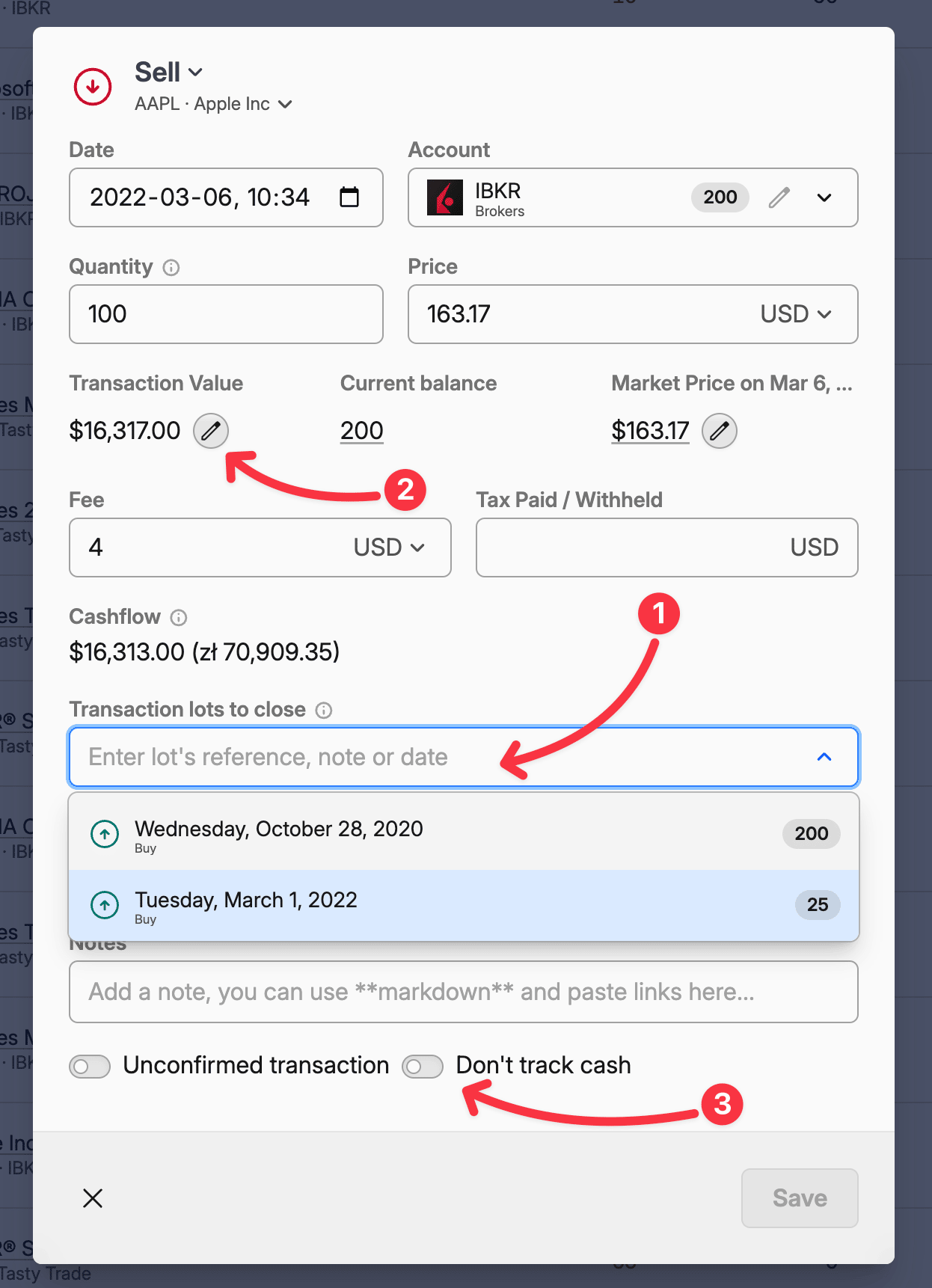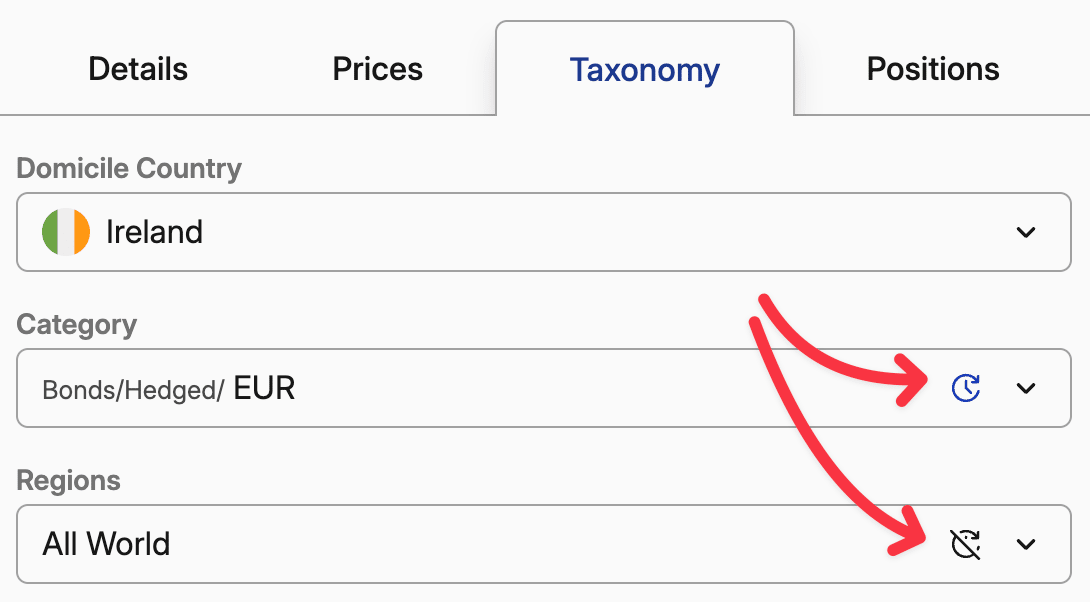Three notable changes when editing Transactions:
You can now manually pick which transaction lots should be closed by the transaction. In some tax jurisdictions you're allowed to set this to optimize your taxes. But you can also use it for other assets, where it's important which lot is depleted first. Only lots that are available at the date of the transaction are displayed, so you may need to edit earlier transactions if the lot you wanted is already closed.
You can type the transaction value, instead of the price. Just click the edit button next to the value. You'll need to enter the quantity first.
You can disable cash tracking for a single transaction.

Very small positions are considered closed
Rounding errors can sometimes leave tiny quantities of a position open. These negligible positions are now automatically considered closed. The threshold varies by asset type: less than 0.01 for cash, less than 0.000001 for crypto, and less than 0.0001 for all other assets.
You can set your own precision level to suit your needs in Settings -> Analysis.
Asset taxonomies update automatically
Previously, asset taxonomies—such as category, region, and sector—were static and required manual updates. Now they're refreshed automatically every few days to ensure your data stays current and accurate.
If you prefer to maintain custom taxonomies for specific assets, you can disable automatic updates for individual assets or turn off the feature entirely in Settings → Analysis.

P.S.
There were a lot of new versions, but not many changelog entries. This is because we're not-so-secretly brewing support for Interest-based pricing - like bonds, loans, mortgages or deposits. It's mostly ready — you can check it in the early access or wait til next week for a full release.